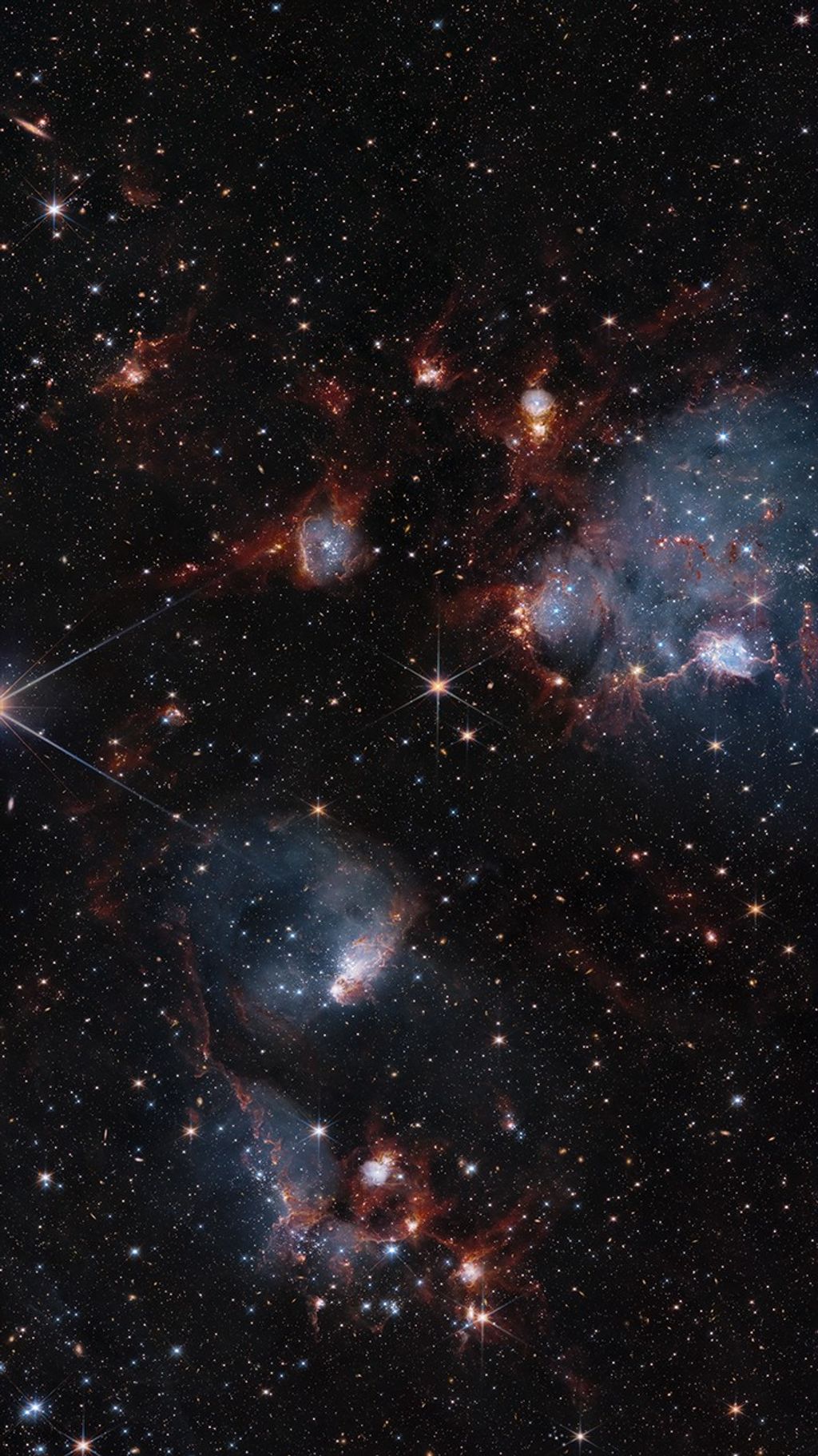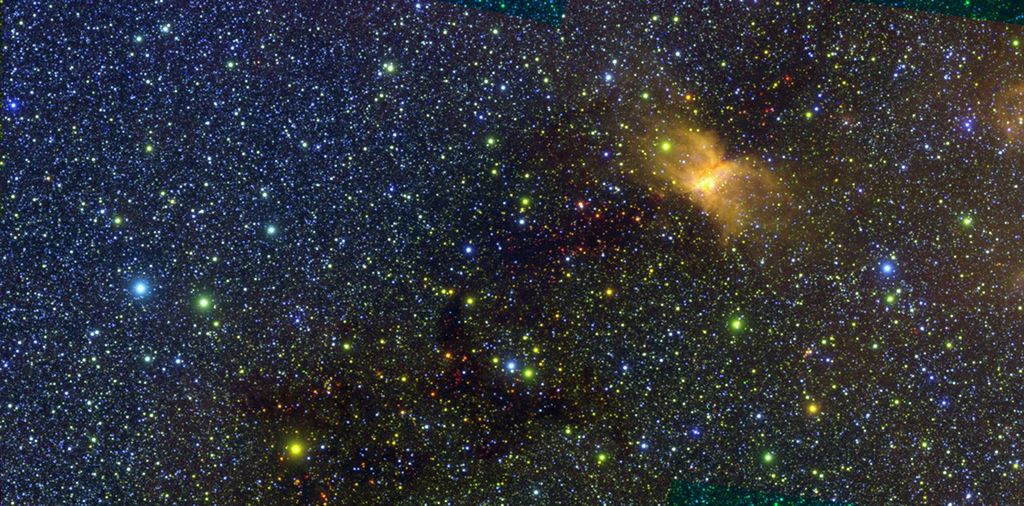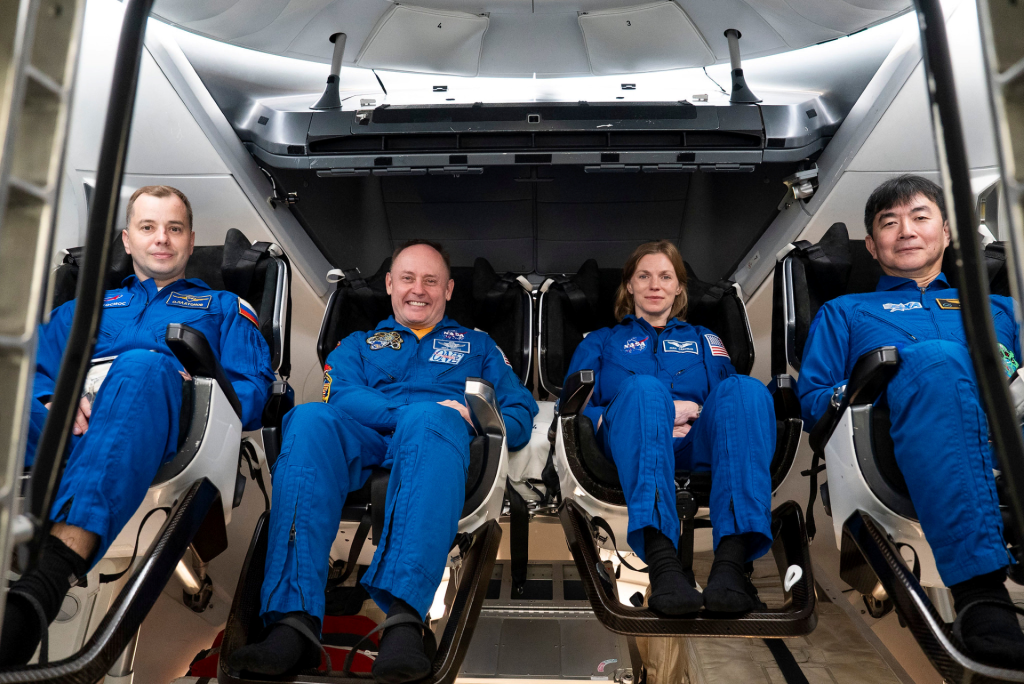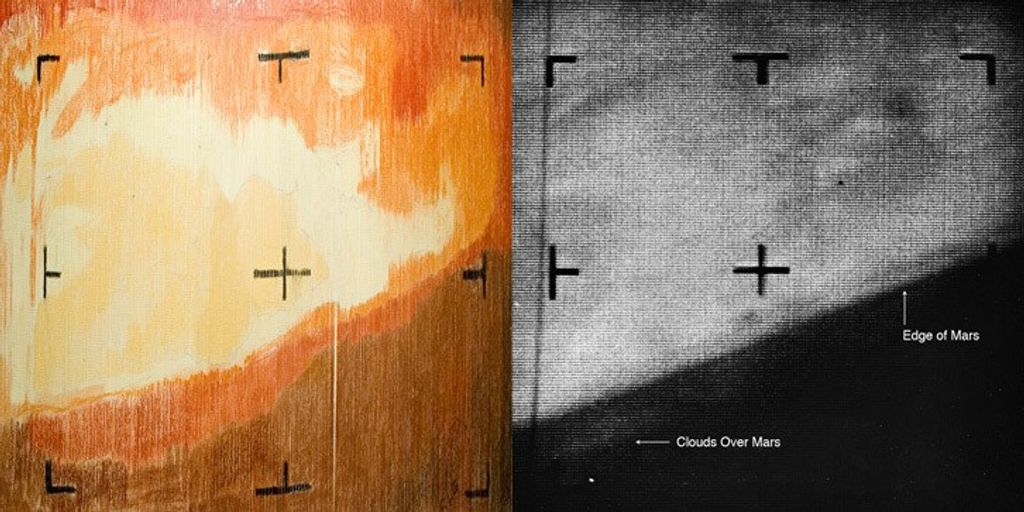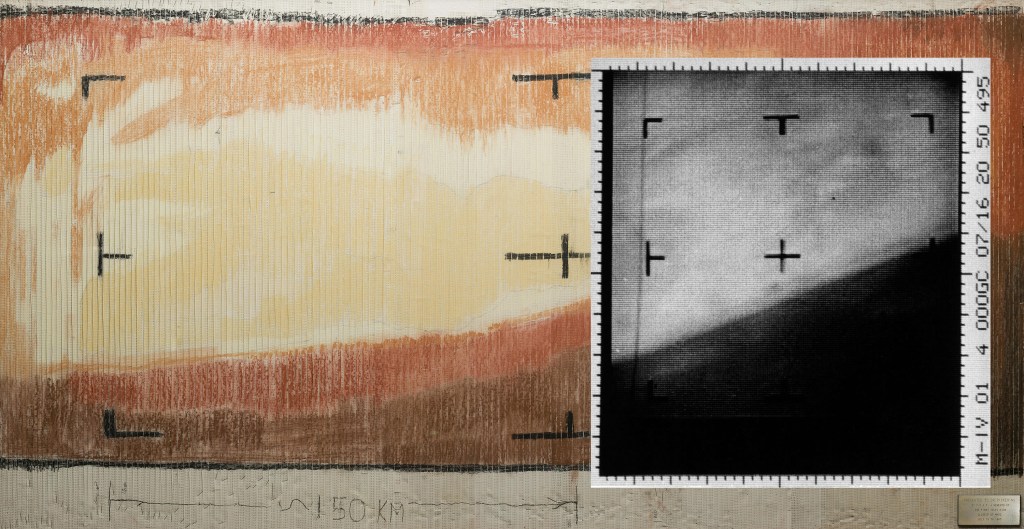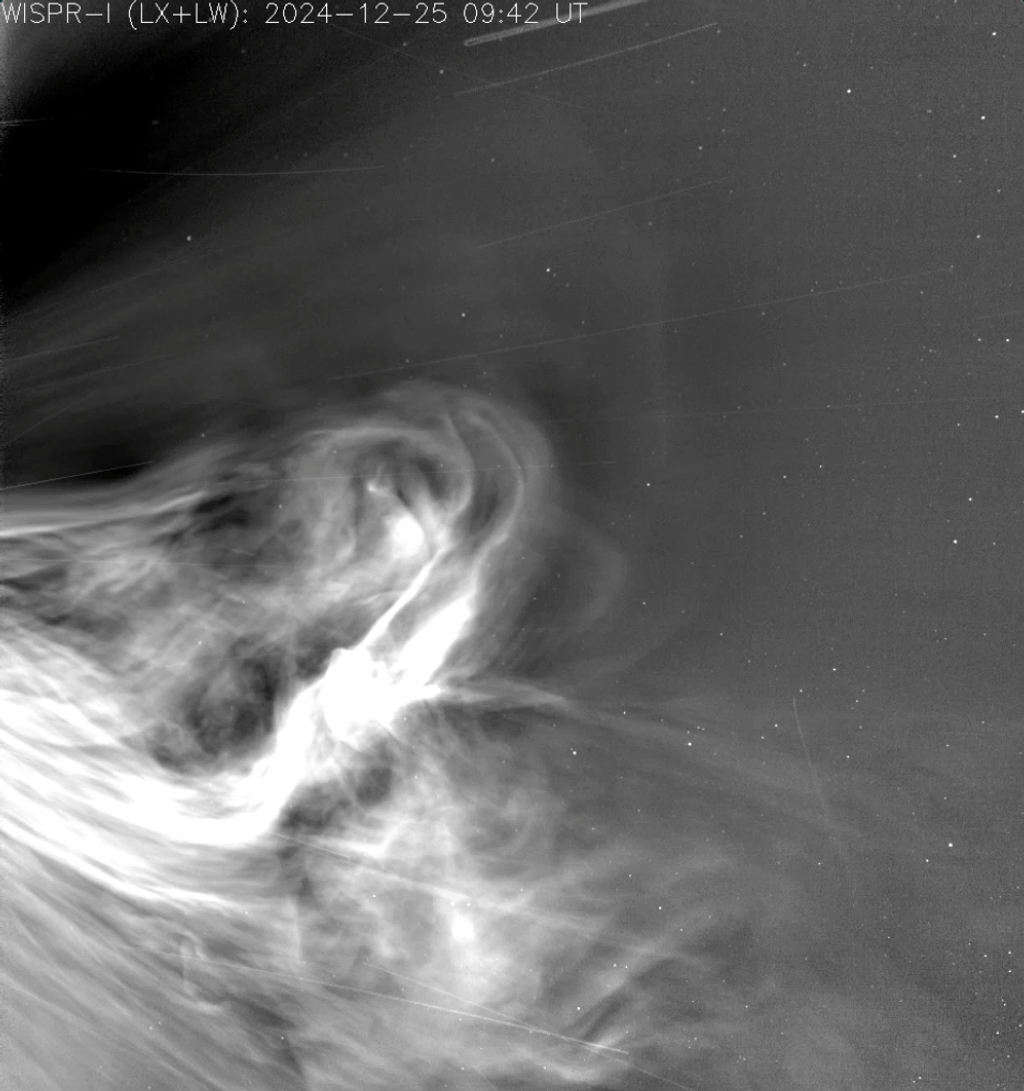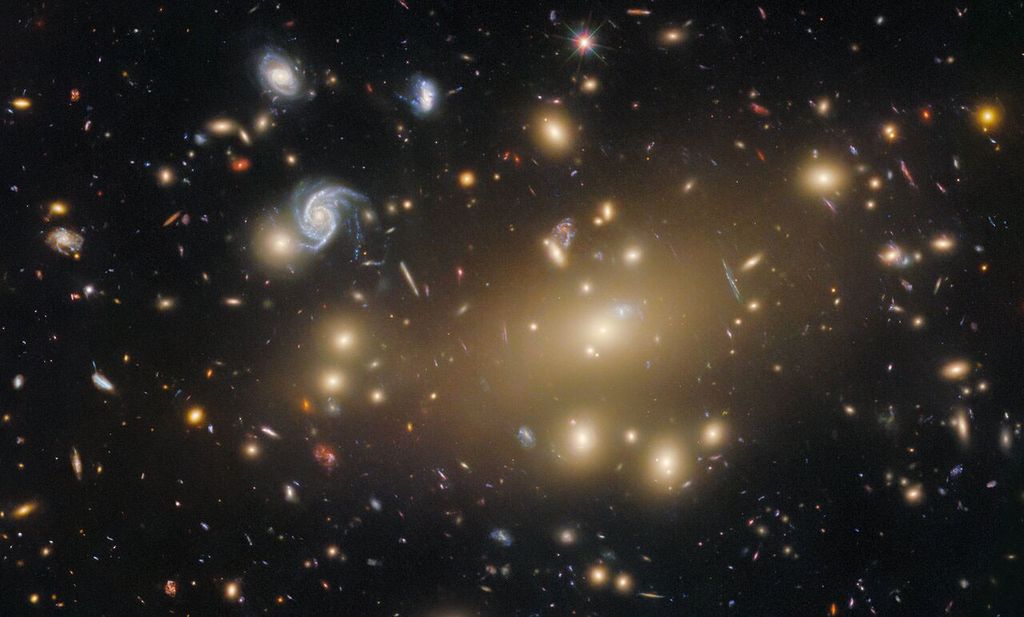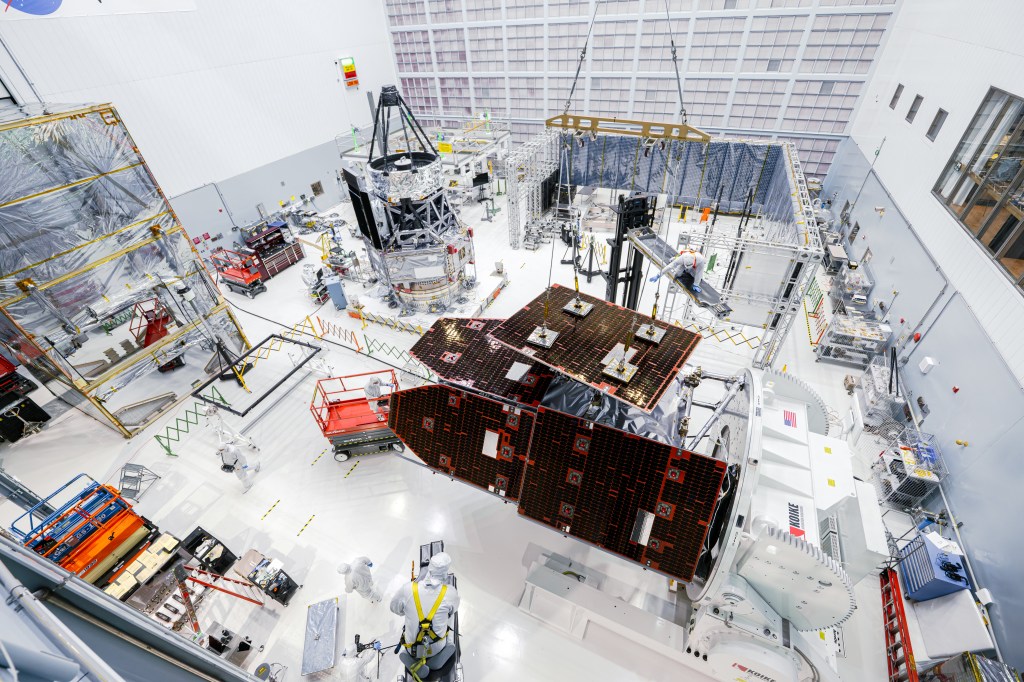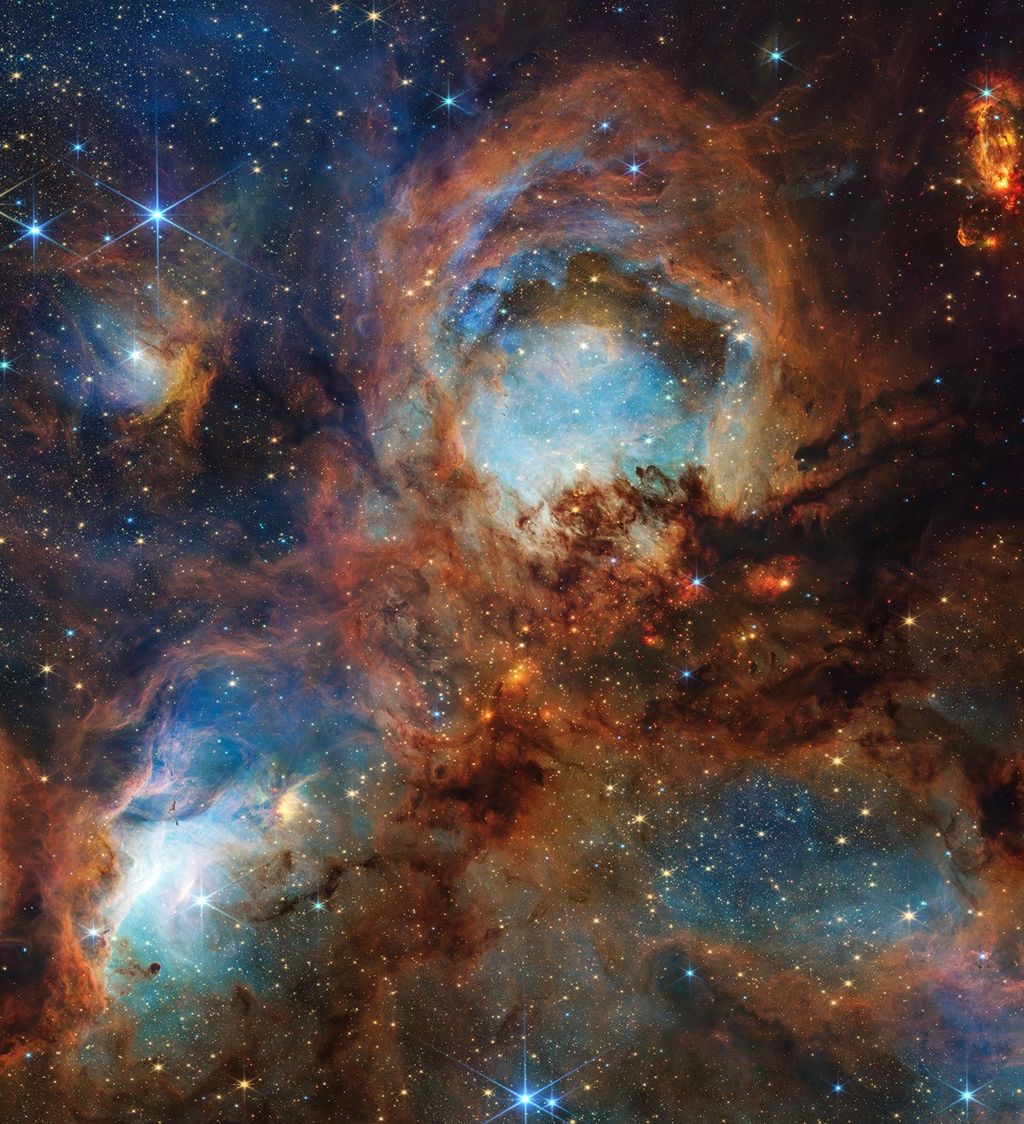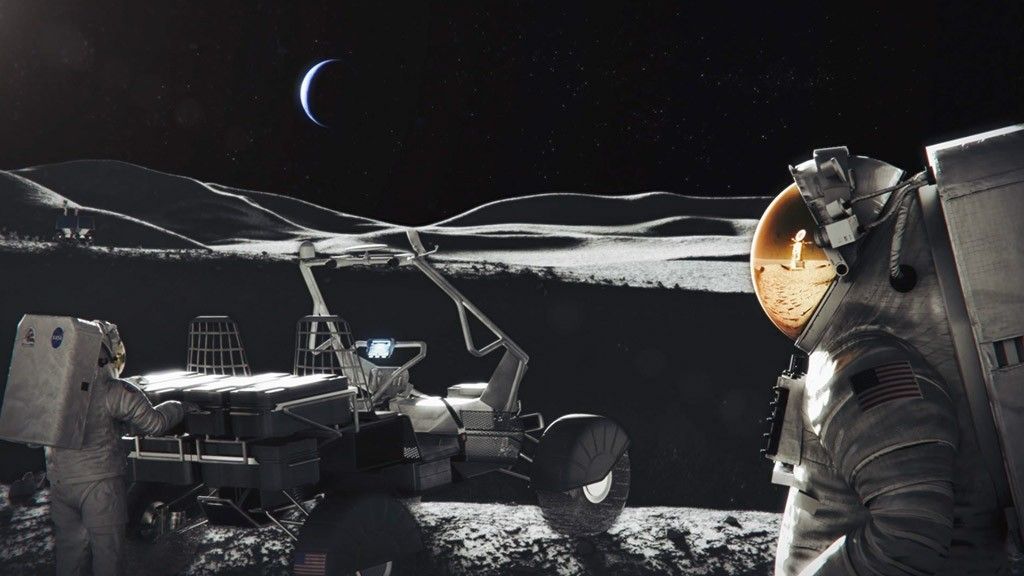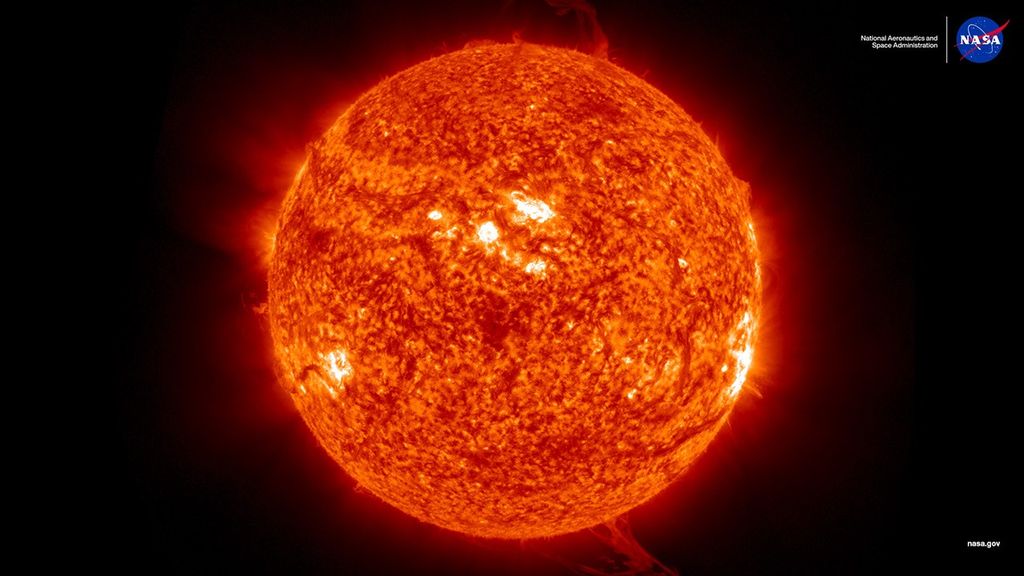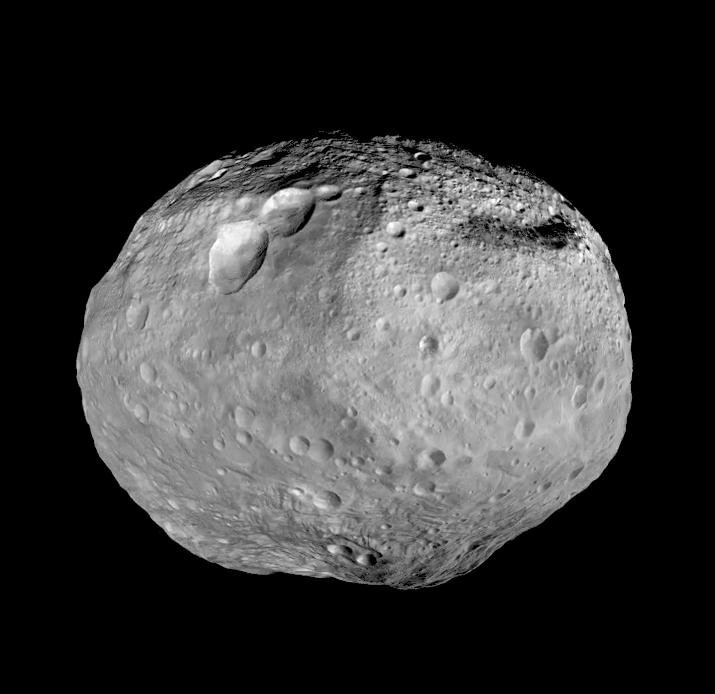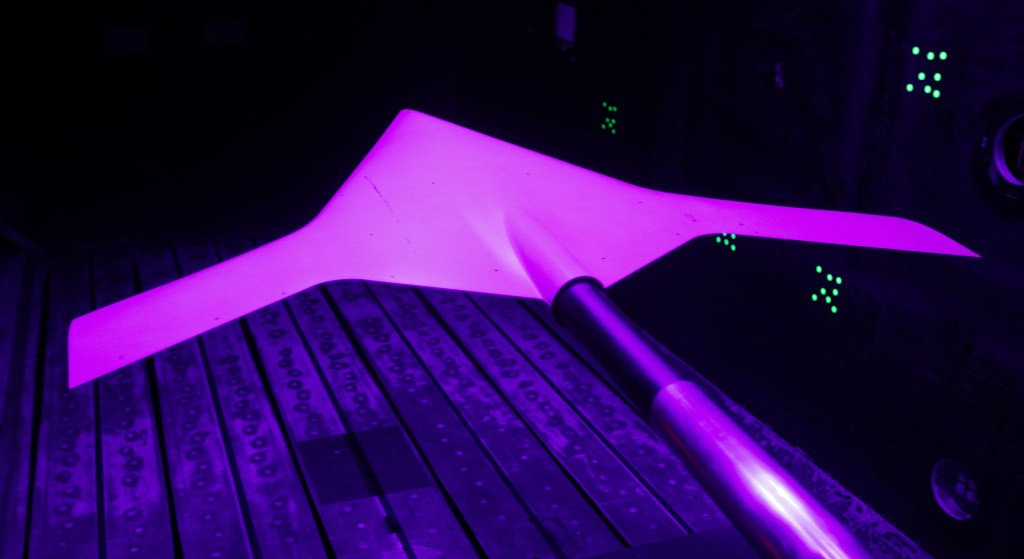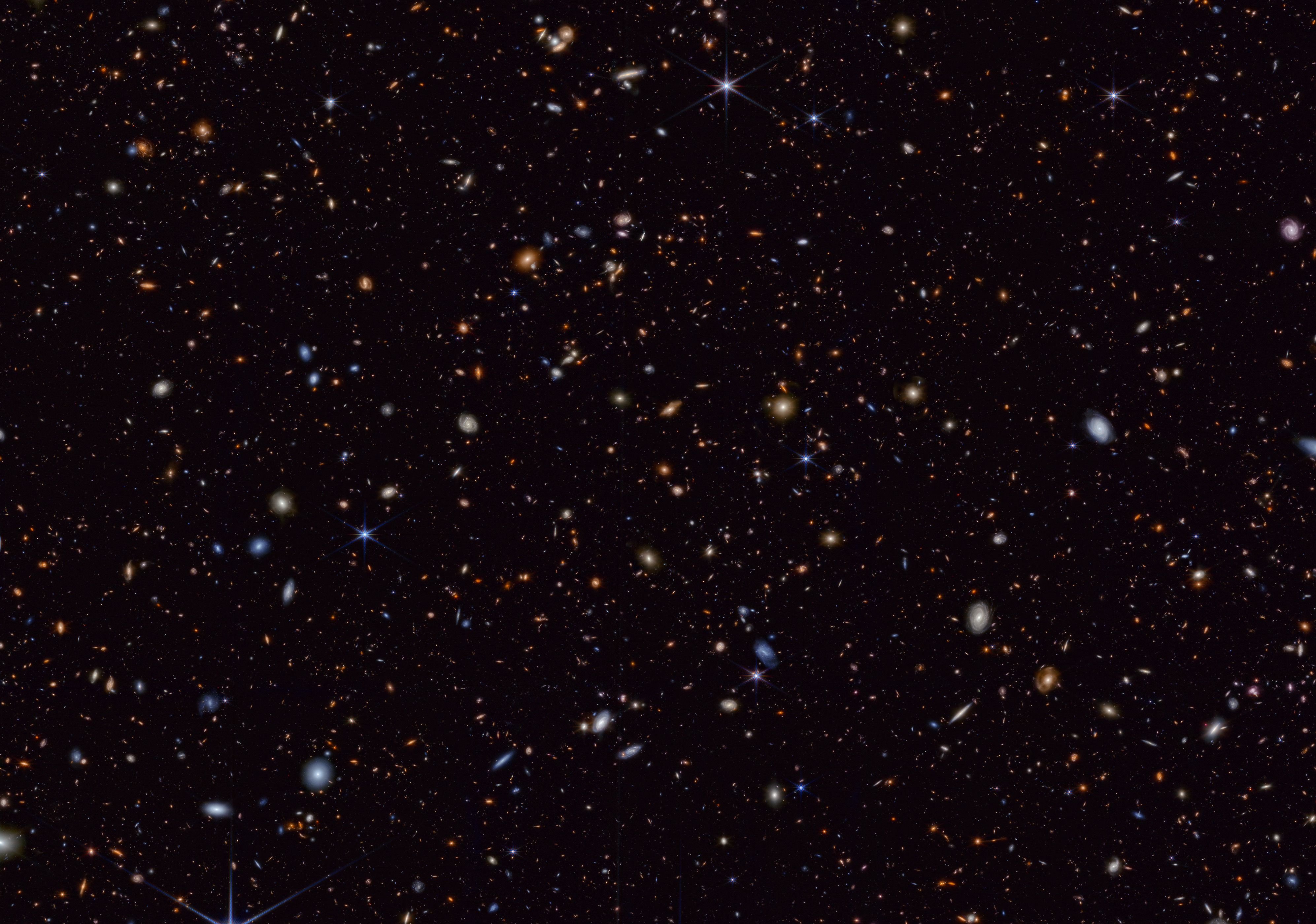1 min read
N 180B in the Large Magellanic Cloud

This active region of star formation in the Large Magellanic Cloud (LMC), as photographed by NASA's Hubble Space Telescope, unveils wispy clouds of hydrogen and oxygen that swirl and mix with dust on a canvas of astronomical size. The LMC is a satellite galaxy of the Milky Way.
This particular region within the LMC, referred to as N 180B, contains some of the brightest known star clusters. The hottest blue stars can be brighter than a million of our Suns. Their intense energy output generates not only harsh ultraviolet radiation but also incredibly strong stellar "winds" of high-speed, charged particles that blow into space. The ultraviolet radiation ionizes the interstellar gas and makes it glow, while the winds can disperse the interstellar gas across tens or hundreds of light-years. Both actions are evident in N 180B.
Also visible etched against the glowing hydrogen and oxygen gases are 100 light-year-long dust streamers that run the length of the nebula, intersecting the core of the cluster near the center of the image. Perpendicular to the direction of the dark streamers, bright orange rims of compact dust clouds appear near the bottom right of and top left corners of the image. These dark concentrations are on the order of a few light-years in size. Also visible among the dust clouds are so-called "elephant trunk" stalks of dust. If the pressure from the nearby stellar winds is great enough to compress this material and cause it to gravitationally contract, star formation might be triggered in these small dust clouds. These dust clouds are evidence that this is still a young star-formation region.
This image was taken with Hubble's Wide Field Planetary Camera 2 in 1998 using filters that isolate light emitted by hydrogen and oxygen gas. To create a color composite, the data from the hydrogen filter were colorized red, the oxygen filter were colorized blue, and a combination of the two filters averaged together was colorized green. The amalgamation yields pink and orange hydrogen clouds set amid a field of soft blue oxygen gas. Dense dust clouds block starlight and glowing gas from our view point.
About the Object
- R.A. PositionR.A. PositionRight ascension – analogous to longitude – is one component of an object's position.05h 48m 48.64s
- Dec. PositionDec. PositionDeclination – analogous to latitude – is one component of an object's position.-70° 4' 27.36"
- ConstellationConstellationOne of 88 recognized regions of the celestial sphere in which the object appears.Dorado
- DistanceDistanceThe physical distance from Earth to the astronomical object. Distances within our solar system are usually measured in Astronomical Units (AU). Distances between stars are usually measured in light-years. Interstellar distances can also be measured in parsecs.Approximately 160,000 light-years (50 kiloparsecs)
- DimensionsDimensionsThe physical size of the object or the apparent angle it subtends on the sky.2.5 arcminutes (118 light-years or 36 parsecs) wide
About the Data
- Data DescriptionData DescriptionProposal: A description of the observations, their scientific justification, and the links to the data available in the science archive.
Science Team: The astronomers who planned the observations and analyzed the data. "PI" refers to the Principal Investigator.This image was created from HST data from proposal 6698: Y.-H. Chu (University of Illinois, Urbana - Champaign), D. Bomans and K. Weis (Universitat Bochum), G. Garcia-Segura and M. Rosado (UNAM), A. Laval (Observatoire de Marseille), S. Points (Northwestern U.), H. Yang (U. Minnesota, Twin Cities). The main science team comprises: Y. Nazé (Universite de Liège, Belgium) and Y.-H. Chu (University of Illinois, Urbana - Champaign). - InstrumentInstrumentThe science instrument used to produce the data.HST>WFPC2
- Exposure DatesExposure DatesThe date(s) that the telescope made its observations and the total exposure time.April 29, 1998, Exposure Time: 37 minutes
- FiltersFiltersThe camera filters that were used in the science observations.F656N (Halpha) and F502N ([O III])
- Object NameObject NameA name or catalog number that astronomers use to identify an astronomical object.LMC N 180B,LHA 120-N 180B
- Object DescriptionObject DescriptionThe type of astronomical object.Bright compact HII region in the Large Magellanic Cloud
- Release DateAugust 23, 2006
- Science ReleaseWispy Dust and Gas Paint Portrait of Starbirth
- CreditNASA, ESA, and the Hubble Heritage Team (STScI/AURA); Acknowledgment: Y.-H. Chu (University of Illinois, Urbana - Champaign) and Y. Nazé (Universite de Liège, Belgium)

Blue: F502N ([O III]) Green: F502N ([O III]) + F656N (Halpha) Red: F656N (Halpha)
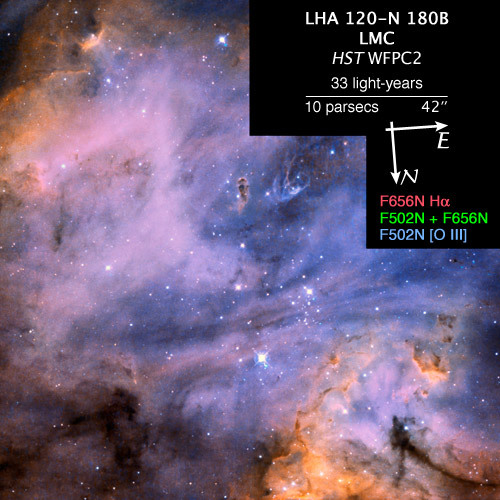
Share
Details
Claire Andreoli
NASA’s Goddard Space Flight Center
Greenbelt, Maryland
claire.andreoli@nasa.gov

